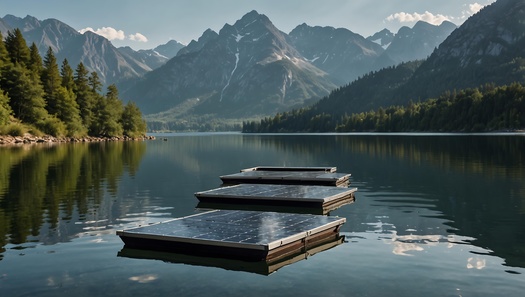Key Takeaways
- The elimination of tax incentives will likely lead to higher electricity rates for rural Alaska residents, who primarily rely on cooperatives.
- U.S. Senator Lisa Murkowski attempted to restore alternative energy incentives but was largely unsuccessful, impacting local energy projects.
- Grassroots efforts are underway to sustain renewable energy initiatives in Alaska amidst the challenges posed by policy changes.
Impact of Policy Changes on Alaska’s Energy Future
The removal of tax incentives aimed at promoting wind and solar energy investment in Alaska will likely result in increased electricity rates for consumers in rural areas. Over 90% of Alaskans depend on power cooperatives that have, in recent years, invested in alternative energy sources, especially in remote regions. Erin McKittrick, a contributor to Alaska Energy blog, indicated that ratepayers might face higher prices due to a decrease in renewable energy options. She noted, “Renewable energy is holding out this promise to maybe keep rates down, but the way things are going we may not get that option.”
U.S. Senator Lisa Murkowski has attempted to negotiate the inclusion of alternative energy tax credits back into the budget, which would have benefitted both local communities and indigenous whale hunters. However, these efforts were ultimately unsuccessful. McKittrick expressed concerns that the loss of incentives will not only affect larger power cooperatives but also threaten small businesses that specialize in renewable energy installations in remote locations.
The abandonment of tax credits poses significant challenges for rural Alaskan energy providers, which already struggle with extreme weather and difficult geography that complicate power generation. Pierre Lonewolf, a board member of the Kotzebue Electric Association, stated that the removal of incentives means critical alternative energy projects, including new wind and solar initiatives, are effectively halted. He described the situation as a “war on renewable energy.”
The effects of these policy shifts are critical, especially for local communities striving to reduce reliance on diesel fuel. The loss of tax incentives will likely lead to increased electricity costs, which will impact residents who depend on affordable power. Kotzebue currently serves as a key hub distributing diesel fuel to 10 surrounding villages, underscoring the importance of transitioning to alternative energy sources.
Despite the challenges, grassroots organizations like the League of Conservation Voters are actively working to keep renewable energy projects alive in Alaska, aiming to reduce dependence on diesel and promote more sustainable power sources. Their efforts are vital in navigating the current policy landscape and ensuring that rural Alaskans continue to pursue a more resilient and affordable energy future.
The content above is a summary. For more details, see the source article.















